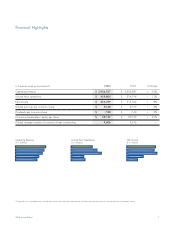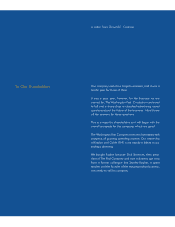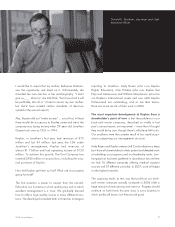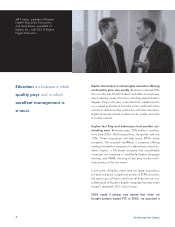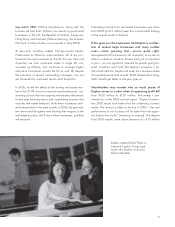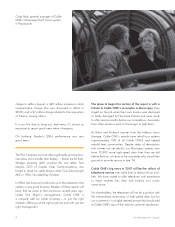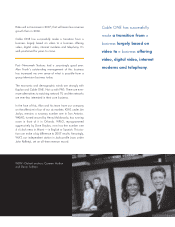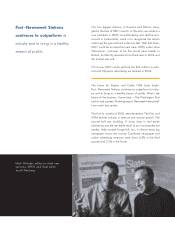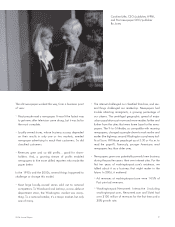Washington Post 2006 Annual Report Download - page 11
Download and view the complete annual report
Please find page 11 of the 2006 Washington Post annual report below. You can navigate through the pages in the report by either clicking on the pages listed below, or by using the keyword search tool below to find specific information within the annual report.
2006 Annual Report 9
The old newspaper worked this way,from a business point
of view:
•Most people read a newspaper.It wasn’t the fastest way
to get news after television came along, but it was by far
the most complete.
•Locally-owned stores, whose business success depended
on their results in only one or two markets, needed
newspaper advertising to reach their customers. So did
classified customers.
•Revenues grew and so did profits … good for share-
holders. And, a growing stream of profits enabled
newspapers to hire more skilled reporters who made the
paper better.
In the 1990s and the 2000s, several things happened to
challenge or change this model.
•Most large locally-owned stores sold out to national
competitors. To Woodward and Lothrop, a now-defunct
department store, the Washington market was every-
thing. To a national retailer,it’s a major market, but only
one of many.
•The internet challenged our classified franchise, and sev-
eral things challenged our readership. Newspapers had
trouble attracting immigrants, a growing percentage of
our citizens. The centrifugal geographic spread of major
urban populations put more and more readers further and
further from the cities that were home base for the news-
papers. The 9-to-5 lifestyle, so compatible with morning
newspapers, changed as people drove to work earlier and
earlier (the highways around Washington carry heavy traf-
fic at 5a.m. Will those people get up at 3:30 or 4 a.m. to
read the paper?). Famously, younger Americans read
newspapers less than older ones.
•Newspapers grew one potentially powerful new business
during the past ten years: their own internet sites. For the
first ten years of washingtonpost.com’s existence, we
talked about it as a business that might matter in the
future. In 2006, it mattered.
>Ad revenues at washingtonpost.com were 14.5% of
Post print ad revenues.
>Washingtonpost.Newsweek Interactive (including
washingtonpost.com, Newsweek.com and Slate) had
over $100 million of revenues for the first time and a
28% growth rate.
Caroline Little, CEO/publisher, WPNI,
and Post newspaper CEO/publisher
Bo Jones



